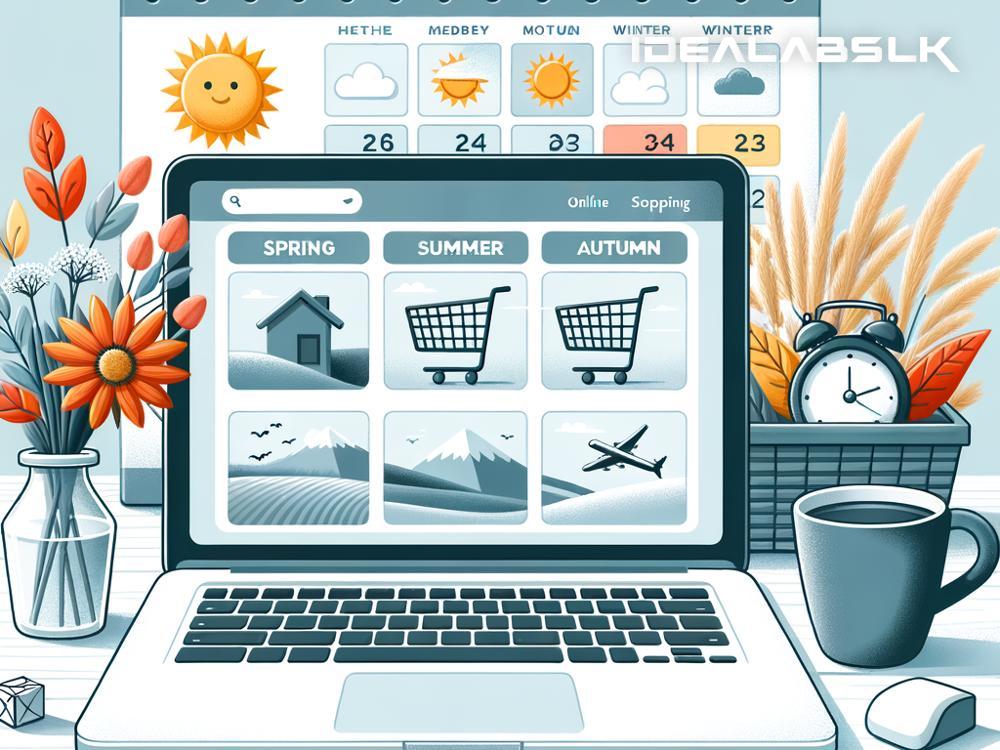Understanding Seasonal Trends in E-commerce: A Simple Guide
In the ever-changing world of e-commerce, understanding seasonal trends is crucial for businesses looking to thrive. Just like weather seasons affect what we wear and how we spend our time, seasonal trends significantly influence consumer spending habits. This guide aims to demystify these trends, providing you with a solid foundation to navigate the e-commerce landscape effectively.
What are Seasonal Trends?
Seasonal trends in e-commerce refer to patterns of consumer behavior that occur at specific times of the year. These trends are influenced by a variety of factors, including holidays, weather changes, and cultural events. For instance, you'll notice a surge in online searches for swimwear during summer or a spike in orders for festive decorations as Christmas approaches.
Understanding these trends helps businesses tailor their marketing strategies, inventory management, and even customer service to meet the anticipated demands.
Why are Seasonal Trends Important?
-
Strategic Planning: Knowing which products will be in demand allows businesses to plan ahead, ensuring they have the right stock at the right time. This prevents overstocking or understocking, both of which can impact profitability.
-
Marketing Optimization: Seasonal trends offer insights into consumer preferences, enabling businesses to craft targeted marketing campaigns. By aligning promotions and advertising with these trends, businesses can resonate more effectively with their audience.
-
Competitive Advantage: Companies that adeptly navigate seasonal trends often stay ahead of their competition. By anticipating and preparing for these patterns, they can capture market share more efficiently.
-
Enhanced Customer Experience: When businesses understand and anticipate their customers' changing needs, they can provide a more personalized shopping experience. This not only boosts sales but also fosters customer loyalty.
Identifying Seasonal Trends
-
Historical Sales Data: Looking at your past sales can reveal patterns. For instance, if you consistently see a spike in sales of certain products during specific months, you can predict similar trends in the future.
-
Industry Reports: Various market research firms publish reports detailing consumer behavior and predicted trends. These can offer valuable insights, though it's crucial to ensure the data is relevant to your specific market segment.
-
Google Trends: This free tool allows you to see the search volume for specific terms over time. By entering keywords related to your products, you can gauge consumer interest throughout the year.
-
Social Media: Monitoring conversations and hashtags related to your industry can give you a sense of emerging trends and consumer preferences.
Leveraging Seasonal Trends
-
Inventory Management: Stock up on items that are predicted to be in high demand. However, be cautious not to overinvest in trends that might not materialize as expected.
-
Dynamic Marketing Strategies: Tailor your marketing efforts to capitalize on upcoming trends. This includes timely promotions, email marketing campaigns, and seasonal advertisements.
-
Website Optimization: Adjust your website's layout to highlight seasonal products or promotions. This can include creating dedicated landing pages for holiday-specific items.
-
Personalization: Use customer data to personalize the shopping experience. For example, suggesting winter sports equipment to customers who purchased ski apparel previously.
Common Mistakes to Avoid
-
Overdependence on Past Trends: While historical data is valuable, the market is always evolving. Be open to adjusting your strategy based on new information.
-
Ignoring Shipping Times: Customers expect timely deliveries, especially around holidays. Ensure your logistics are up to speed to avoid disappointing delays.
-
Neglecting Off-season Opportunities: Sometimes, the off-season can offer lucrative opportunities. For example, marketing winter gear to customers in the southern hemisphere during your summer months.
Conclusion
Understanding and leveraging seasonal trends is essential for e-commerce success. By staying attuned to consumer behavior and adapting your strategies accordingly, you can not only maximize sales but also enhance your brand's reputation. Start by analyzing your own sales data, supplement this with industry reports, and keep a keen eye on societal shifts. With a proactive approach, you can turn seasonal trends into significant opportunities for your e-commerce business.

